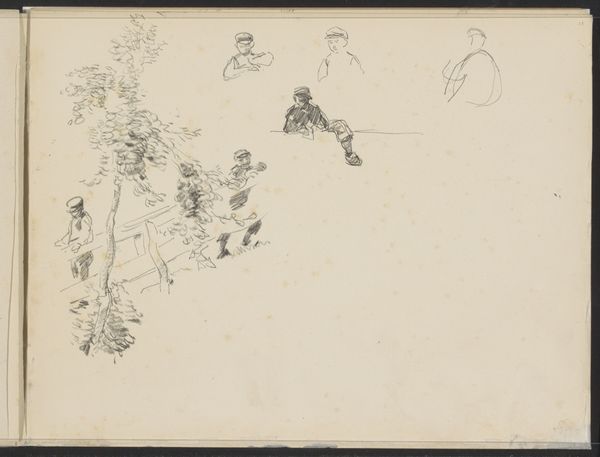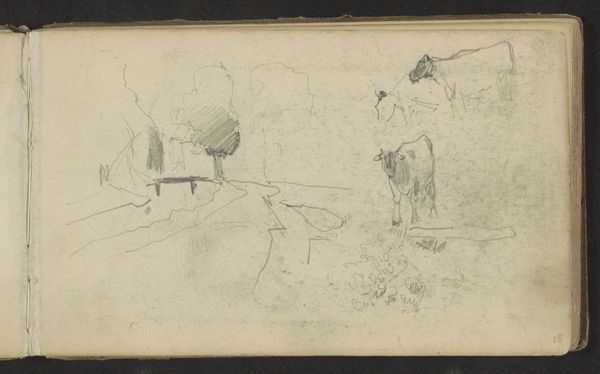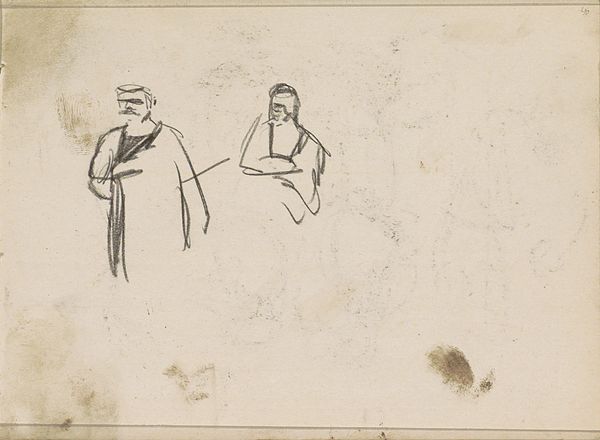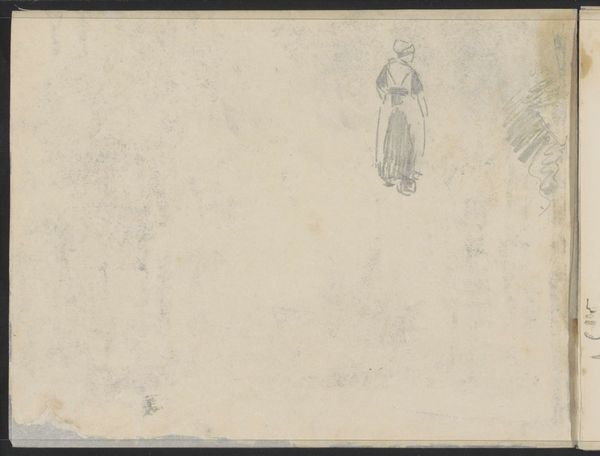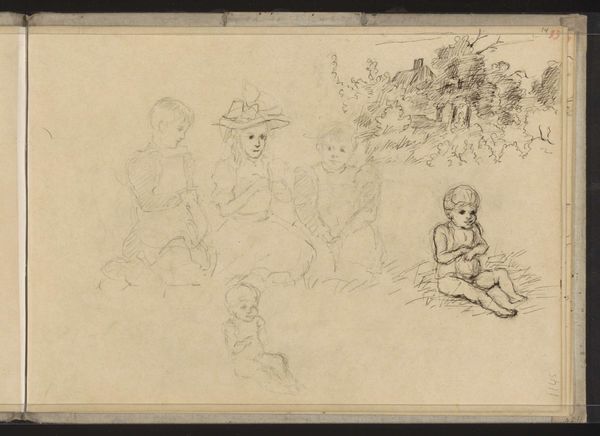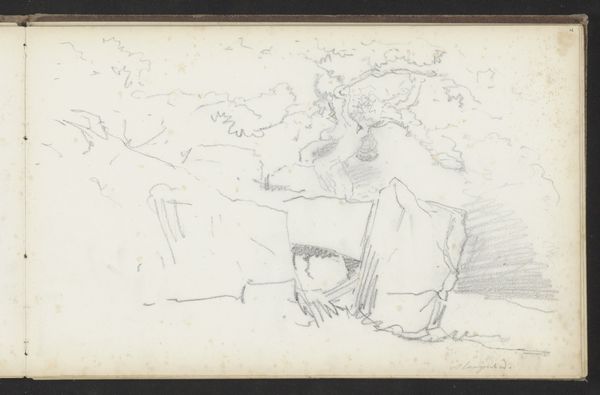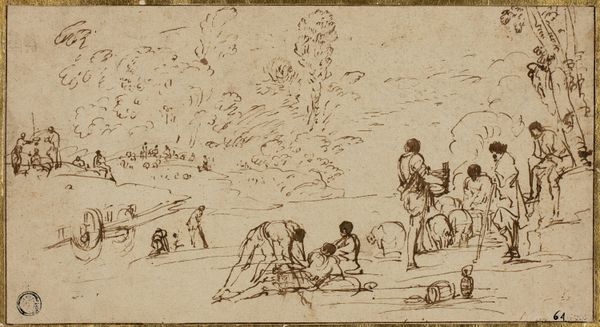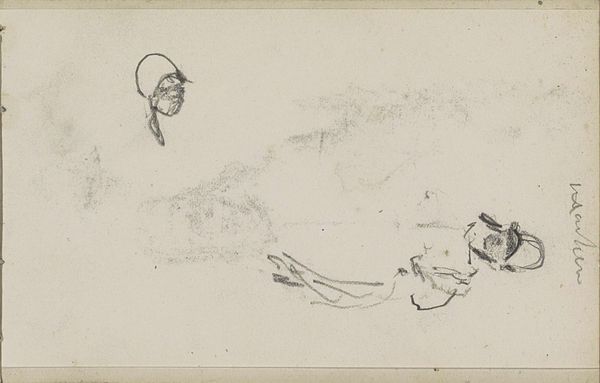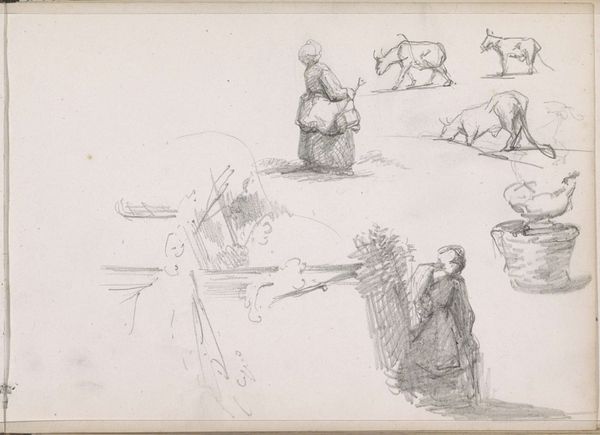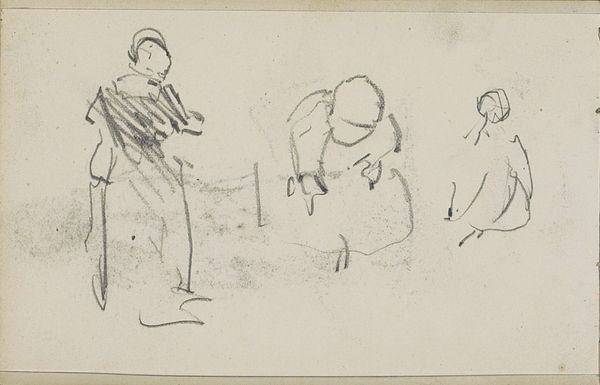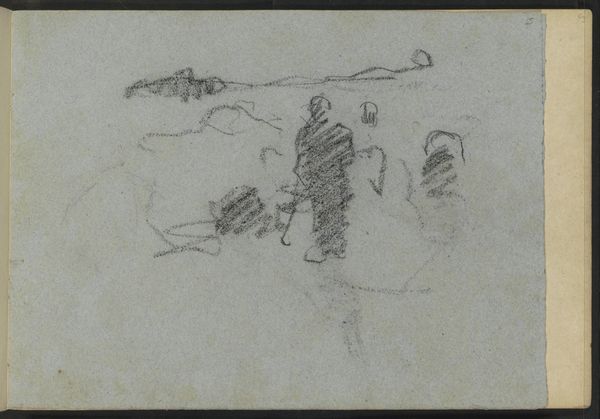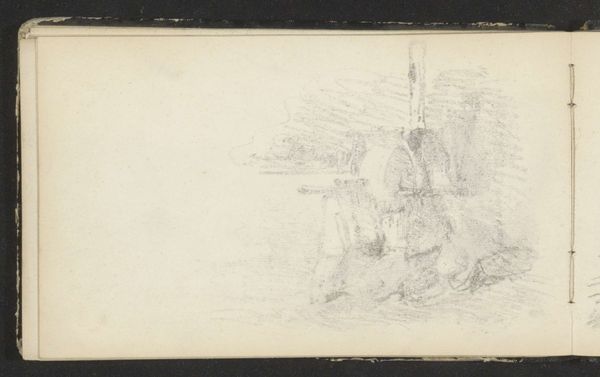
Figuurstudies, waaronder een vrouw die aardappels rooit en een zittend kind 1885 - 1931
0:00
0:00
drawing, paper, pencil
#
portrait
#
drawing
#
landscape
#
figuration
#
paper
#
child
#
pencil
#
genre-painting
Copyright: Rijks Museum: Open Domain
Editor: So, here we have Willem Bastiaan Tholen's "Figure Studies, Including a Woman Digging Potatoes and a Seated Child," done sometime between 1885 and 1931. It's a pencil drawing on paper, currently residing at the Rijksmuseum. I'm struck by how raw and unpolished it is. What aspects of this piece grab your attention? Curator: What's compelling here is how this drawing functions as a record of labor. Note the medium: pencil on paper. Inexpensive, readily available. This choice suggests accessibility, a direct link to sketching everyday life, particularly working-class life. We see figures involved in physical activity – the potato digger. Think about the social context: late 19th, early 20th century, industrialization, agrarian societies. How does Tholen's focus on these figures challenge the traditional subject matter of 'high' art? Editor: I see what you mean. It’s not some grand historical scene; it’s just… someone digging. So, you're saying the cheap materials and the subject matter elevate the act of labor itself? Curator: Precisely! It also blurs the line between art and documentation. The artist’s hand, the pencil, the paper – all contribute to a representation of manual work. What if he were making a comment on the artistic 'labor' as comparable to potato digging? Or the process from soil to sketch being the real matter. Does the apparent lack of detail remove emotion from these workers? Editor: That's a neat idea! Maybe by showing them simply as figures doing labor and nothing else it adds to the power and visibility of their social class. Thanks, I've definitely got a different perspective now! Curator: My pleasure! Considering art through the lens of its creation and material realities often reveals untold narratives. It forces us to consider who gets represented, how, and why.
Comments
No comments
Be the first to comment and join the conversation on the ultimate creative platform.
